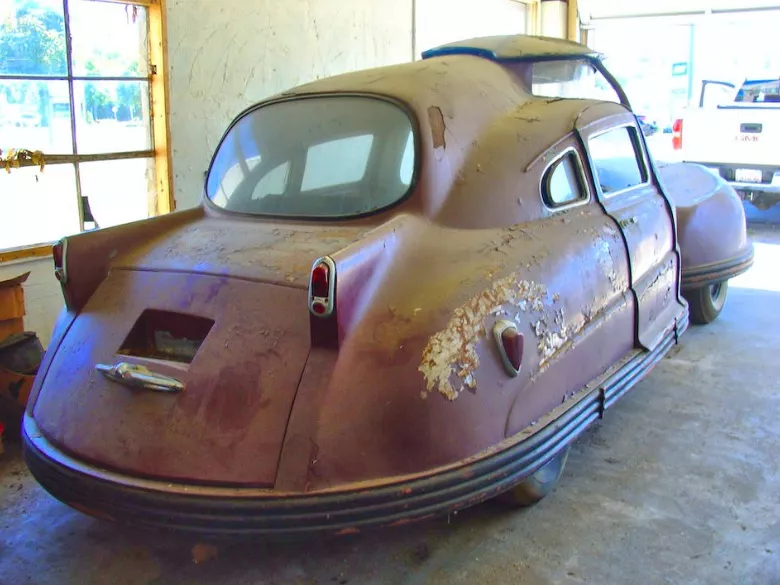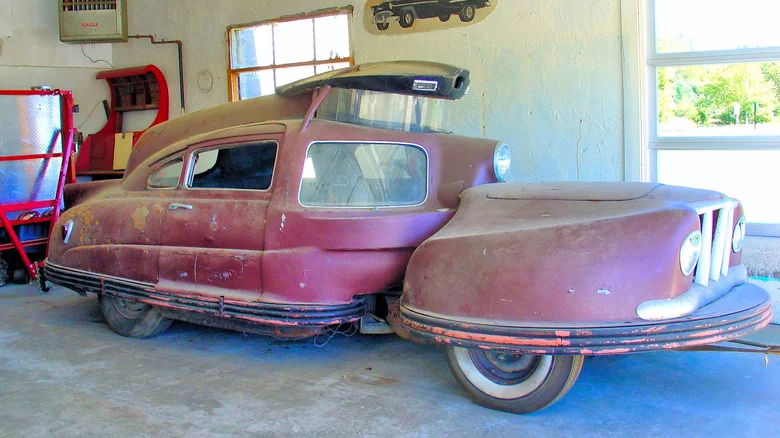Sir vival is a unique car with two-stage design and was once known as the safe car of the future. Now, it has found a new home, and I hope it can be well deserved to be repaired According to Hemmings, the experimental vehicle is being transferred from the garage of Bellingham auto sales, its hometown, to the Lane Auto Museum run by Jeff Lane in Nashville, Tennessee. Edward T. Moore, the owner, is very generous to share the following photos with slashgear.

This car is a legend in the automobile history, mainly because of its unique design and safety features: some of them have become the main features of the automobile in the coming years. The whirlwind car was extensively modified on the basis of Hudson in 1948. Its engine and a pair of wheels are connected at the front, while the rear has a cockpit like design with a central steering wheel. The two parts are hinged together so that they can rotate independently.
There is a dome shaped glass in the driving area, which can see the all-round scenery, and the wiper is fixed. Instead of using the wipers on other cars, sir vival rotates the curved glass to clean it. The car is surrounded by mild steel bumpers, side rear lights, safety belts, and even an air inlet at the top, which looks strikingly similar to the concept of engine air inlet of modern F1 racing cars.
The future safety car has never appeared
On the cover of the april1959 edition of Mechanix illustrated, the rear of this unique car is described as a "club room", which can accommodate three passengers. The core idea of Sir vival's two-part design is that in the event of a collision, half of it will move to absorb the impact force, and the lateral revolving door of the latter half will remain closed in the event of an accident.

This car designed by Walter C. Jerome has only one prototype. The ambitious Sir vival did not find any buyers, especially the mainstream automobile manufacturers and even road safety enthusiasts in the 1950s. Jerome originally planned to sell 12 cars a year at a price of $10000 each. If there was a demand, he also planned to produce one car a day. But at that time, the price of a well-equipped mainstream luxury car was half of that price - so unfortunately, this series of production never happened.
Ambitious ideas several years before modern safety standards

"Call me a Crusader if you like," Jerome wrote in his campaign for the concept car. "But I believe, and hundreds of national automotive writers and journalists agree, that I have something America desperately needs." The engineer continued to attack the solid body design of the car manufacturer at that time, which he believed put passenger safety in the second place.
Even with such passion, sir vival has not made further progress than this example, but at least some of the safety concepts it advocates will be applied to mass-produced vehicles in the next few years. For example, the safety belt became a legal requirement for new cars in the United States in 1968. Although Jerome's idea of two flexible parts may not be adopted, the ultimate goal of the body structure is to absorb the impact of the collision rather than transmit it to the passengers. Now it has become a basic part of the new car design.